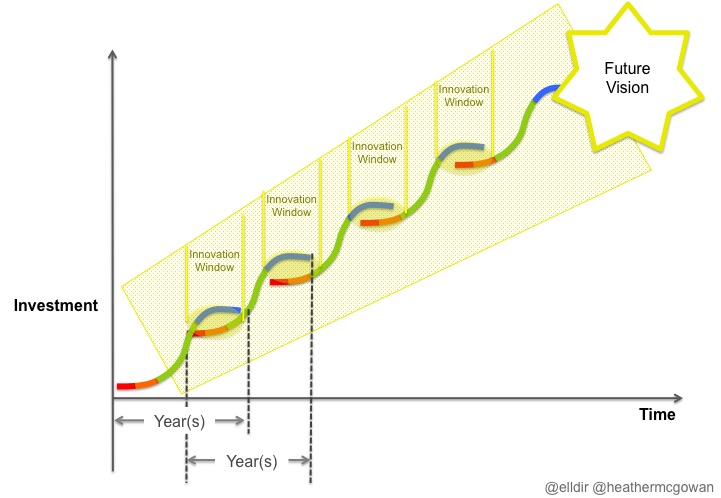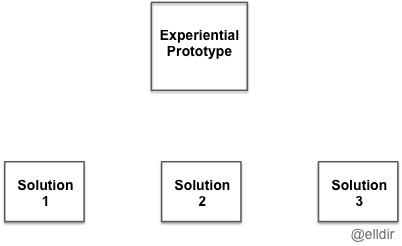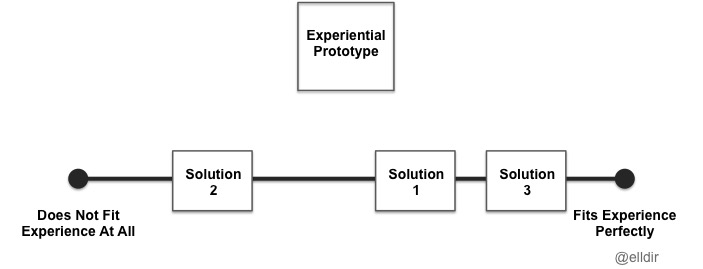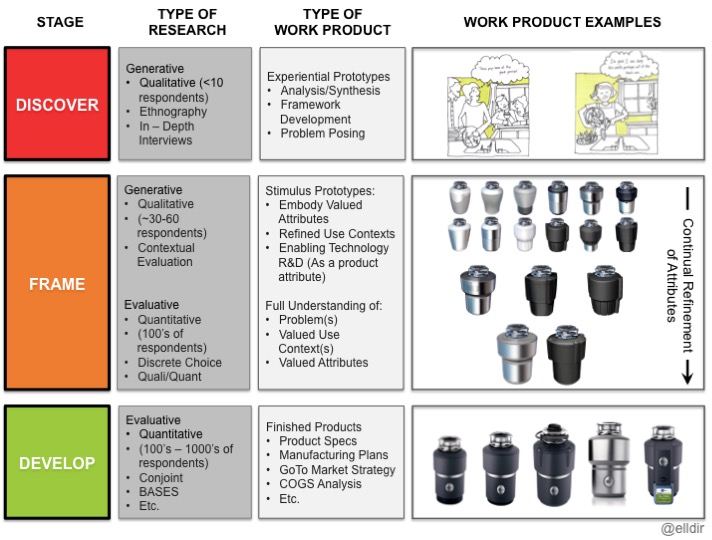Quick recap
This post is Part 4 of the series on incorporating disruptive innovation approaches while optimizing the current business.
Part 1 introduced the tension of balancing a present and future focus, caused by the shorter technology and product life cycles.
Part 2 introduced a new paradigm for thinking about this balance while progressing toward a future vision.
Part 3 introduced Experiential Prototyping as a tool to frame the benefits and use context of a product platform along the way toward the future vision. It is used in the Discover and Frame stages of the product life cycle as shown below:
While an Experiential Prototype can inform whether or not a solution should be considered, this post will introduce Contextual Evaluation as a tool to know how well a new solution will deliver the benefits depicted by the Experiential Prototype.
What is a Contextual Evaluation
Most test methods are designed to evaluate the likelihood that a specific market will buy a finished product at a specific price. This works well when the context of use is familiar to consumers, and the company already knows the technology, process, and costs to product it.
If these methods are used to evaluate a new solution (new value proposition, product type, or attributes) the new solution usually fails because consumers have a bias toward what is familiar. This is why new ideas are often killed before they reach the market.
A former employee of a large cola brand described this issue to me very well:
We couldn’t develop innovative products because our process dictated the use of the same downstream test methods we use for product upgrades. If Red Bull was BASES tested against one of our current products, it would fail. No one would argue that it is a successful product, but in our company it would never have made it to market.”
However, companies do need a way to reduce the risk of investing in the development of innovative products. This is where Contextual Evaluation is needed.
Sorting vs Preference
The main goal of Contextual Evaluation is to remove the biases of preference and familiarity. In order to do that, solution assessment is based on sorting to the context depicted in our Experiential Prototype. Since each evaluation needs to be tailored to the specific goals and context of each project, let’s look at a simplified example:
Starting with the Experiential Prototype as depicted in Part 3, different solutions (or types of solutions) will be envisioned. It’s best if they are created with the following principles in mind:
- Similar attributes should be compared. For example, if evaluating visual attributes, the solutions should all be rendered similarly – the visual equivalent of isolating variables.
- Early prototypes should not be too detailed. Save refinements until after the main direction has been determined.
The sorting exercise (evaluation) can then proceed as follows:
- Show Experiential Prototype
- Ask “What is going on in this scenario? What benefits does it provide?
- Then ask “What would a new (fill in the blank) need to do to provide this benefit?
- Have them sort the ‘solutions’ based on how well they do what was described – and have them discuss their rationale aloud while sorting.
Using the Results
It is tempting to try to “pick a winner” from the results, but remember, at this stage we are evaluating potential directions for solutions, not fully built products. For this reason, the results are used to give information about how product attributes should be used in the development stage.
As an example, below is a summary of how results were used to evaluate visual attributes through this process for former client InSinkErator. The full case study can be found in an article I wrote several years ago called, The Art of Translating Market Insight into Opportunities for Innovation.
Remember that the prototypes used in the Frame stage are used to depict and refine the attributes being evaluated. They feed the development of a product spec, but they are not examples of finished products.
Reducing the Risk of Investment
As I’ve tried to show in this simplified example, Contextual Evaluation is a very useful tool to assess whether or not a new idea is on the right track – BEFORE investing too heavily in the development of a specific execution.
Revisiting the above chart, in the grand scheme of things it costs a LOT to develop a product. These costs will be similar whether you are developing the right product, or the wrong product. It costs relatively little to do the right work in Discovering and Framing the opportunity to ensure that it will be money well spent.
Next, this series will wrap up with some lessons learned in going through the process.
Image Credit: Ellen Di Resta and Heather McGowan







